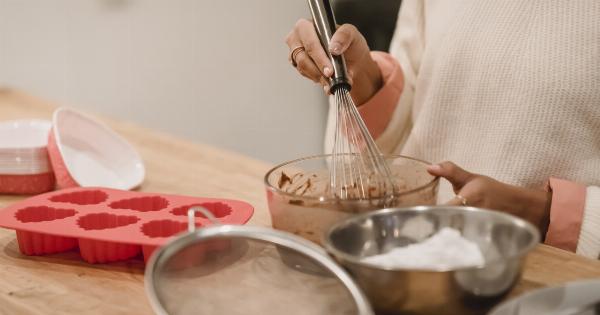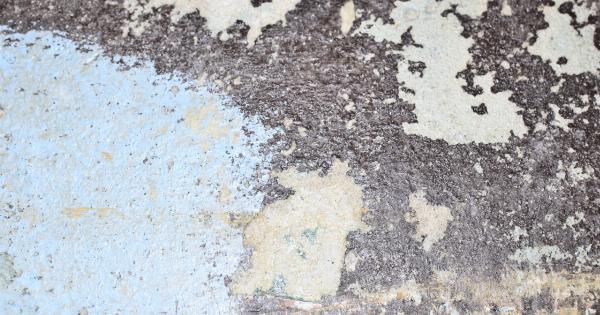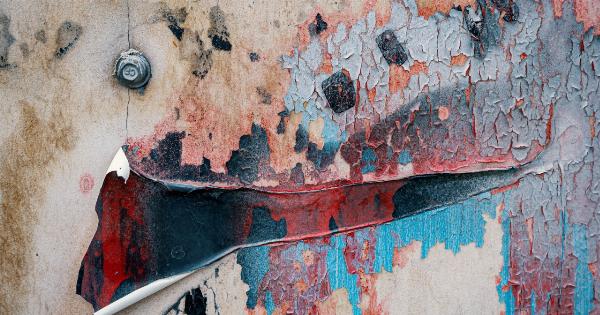Mold refers to a type of fungus that can grow indoors and outdoors. While some forms of mold are harmless, others can have a detrimental effect on your health.
It is important to understand the potential health risks associated with mold exposure and how to prevent and deal with mold-related issues in your environment. In this article, we will explore the impact of mold on your health and provide you with valuable information to help you stay safe.
The Dangers of Mold Exposure
When mold spores are present in the air, they can easily find their way into your respiratory system. This can cause various health problems, especially for individuals who are sensitive or allergic to mold.
Some of the potential dangers of mold exposure include:.
-
Allergic Reactions
Exposure to mold can trigger allergic reactions in susceptible individuals. Common symptoms may include sneezing, itching, watery eyes, nasal congestion, and skin rash.
These symptoms can range from mild to severe, depending on the person’s sensitivity to mold.
-
Asthma Attacks
Mold can aggravate asthma symptoms and lead to asthma attacks. People with pre-existing asthma may experience increased wheezing, coughing, chest tightness, and difficulty breathing when exposed to mold spores.
-
Respiratory Infections
In some cases, mold exposure can lead to respiratory infections. Mold spores can irritate the respiratory system and make it more susceptible to infection.
Symptoms of respiratory infections caused by mold may include cough, fever, shortness of breath, and fatigue.
-
Toxic Effects
Certain types of mold, such as black mold (Stachybotrys chartarum), produce toxic substances called mycotoxins. These mycotoxins can cause severe health problems when inhaled or touched.
Prolonged exposure to mycotoxins can lead to respiratory issues, neurological problems, immune system disorders, and even long-term organ damage.
-
Other Health Impacts
Aside from respiratory issues, mold exposure has been linked to other health problems. These include eye irritation, headaches, fatigue, difficulty concentrating, skin irritation, and digestive issues.
Preventing Mold Growth
Preventing mold growth is crucial to safeguarding your health and minimizing potential hazards. Here are some important steps you can take:.
Controlling Moisture
Mold thrives in damp environments, so it is vital to control moisture levels in your home or workplace. Here’s how you can do it:.
-
Monitor Humidity
Keep an eye on indoor humidity levels. Ideally, relative humidity should be kept below 50%. Use a hygrometer to measure humidity and use dehumidifiers or air conditioners to reduce moisture if necessary.
-
Fix Leaks
Repair any leaks in plumbing, roofs, or windows promptly. Leaks can create a favorable environment for mold growth if left unaddressed.
-
Improve Ventilation
Ensure proper ventilation in your home. Use exhaust fans in bathrooms and kitchens to remove excess moisture. Open windows regularly to increase air circulation.
-
Prevent Condensation
Avoid condensation by insulating cold surfaces like windows, floors, and walls. Condensation can provide enough moisture for mold to flourish.
Maintaining Cleanliness
Keeping your surroundings clean can discourage mold growth and reduce the risk of exposure. Follow these cleanliness practices:.
-
Regular Cleaning
Regularly clean and dust your home or workplace. This helps to remove mold spores and prevents their accumulation.
-
Properly Ventilate Bathrooms
After showering, use ventilation fans or open windows to remove excess moisture. Wipe down wet surfaces and towels to prevent mold growth.
-
Dry Wet Areas
Immediately dry any wet areas within 24 to 48 hours. Whether it’s a spill, leak, or flooding incident, thorough drying is crucial to prevent mold colonization.
-
Remove Mold-Infested Materials
If you discover mold growth, it is important to remove and properly dispose of the affected materials. This includes carpets, upholstery, wallpaper, or any porous items that cannot be effectively cleaned.
-
Use Mold-Resistant Products
Consider using mold-resistant building materials and paints, especially in areas prone to moisture like bathrooms and basements. These products can help inhibit mold growth.
Recognizing and Addressing Mold Problems
It’s crucial to be able to recognize signs of mold growth and take swift action to address the issue. Here’s what you need to know:.
Visible Mold Growth
If you notice mold growth on surfaces, it is important not to disturb it to avoid spreading mold spores into the air. Instead, follow these steps:.
-
Assess the Extent of the Problem
Determine the size of the affected area. If the growth covers an area larger than a square meter (approximately 10 square feet), it is advisable to seek professional help for proper remediation.
-
Protect Yourself
Prior to cleaning or removing the mold, ensure you are wearing protective gear. This includes an N95 respirator mask, gloves, long-sleeved clothing, and goggles to prevent mold spores from coming into contact with your skin or being inhaled.
-
Contain the Mold
Isolate the affected area from the rest of the space to prevent the spread of mold spores. Use plastic sheets or tarps to seal off the area and consider using negative air pressure machines.
-
Remove Mold
Clean the mold-infested surfaces thoroughly using a mild detergent or specially formulated mold cleaner. Scrub off the visible mold, and ensure the area is completely dry after cleaning.
-
Dispose of Materials
Dispose of any materials that cannot be effectively cleaned or remediated, as they may continue to harbor mold and lead to future problems.
-
Address Underlying Causes
Identify and address the underlying causes of the mold growth to prevent recurrence. Examine moisture sources, leaks, or ventilation issues.
Professional Mold Remediation
In situations where mold growth is extensive or recurring, it is crucial to seek professional mold remediation services.
Professional remediation experts have the necessary knowledge, experience, and equipment to thoroughly assess the mold problem and safely remove it. They can also identify and address any underlying causes to prevent future mold issues.
Conclusion
Mold can pose significant risks to your health. Understanding the dangers of mold exposure and taking proactive measures to prevent and address mold growth can help safeguard your wellbeing.
By closely monitoring moisture levels, maintaining cleanliness, and recognizing signs of mold growth, you can minimize the risks associated with mold and create a healthier indoor environment for yourself and your loved ones.































